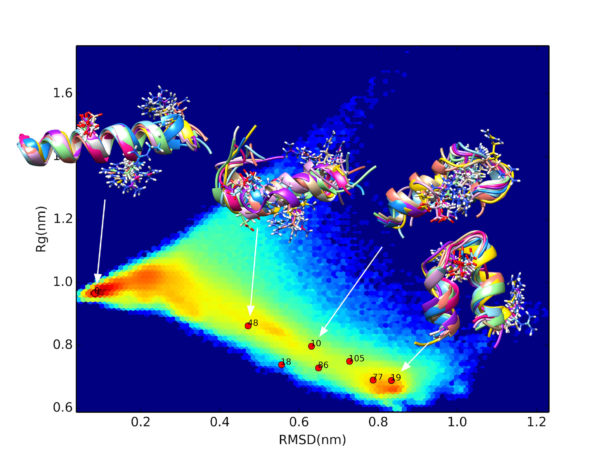A powerful method to understand folding and conformational change in proteins has been the Markov State Model (MSM) approach, in which protein dynamics can be described as a network of conformational states connected by forward and backward transition rates. Folding@home has proved to be an extremely valuable tool for constructing MSMs, because large-scale simulations are needed to sample the relevant states (numbering in the tens of thousands or more) and estimate the rates (by observing how many transitions are made over the course of many trajectories).
The Voelz lab has been working on using MSMs to understand how small changes to a protein, like a single-point mutation or chemical modification, perturb the transition rates. Not surprisingly, perturbations affect some states more than others. It turns out that a particular statistical metric, called the surprisal, can be used to identify the states most affected by perturbations. Using this metric, we can reveal the mechanisms by which perturbations affect dynamics; in the future, this may help us better understand the role of disease-causing mutations. We can also use the surprisal metric to choose states on which to focus more simulations, to help us efficiently interrogate the consequences of different chemical modifications. In this way, we hope to be able to use molecular simulation to help design drugs that mimic stable protein folds. The work is described in a new article published in the Journal of Chemical Theory and Computation (http://dx.doi.org/10.1021/ct500827g).

